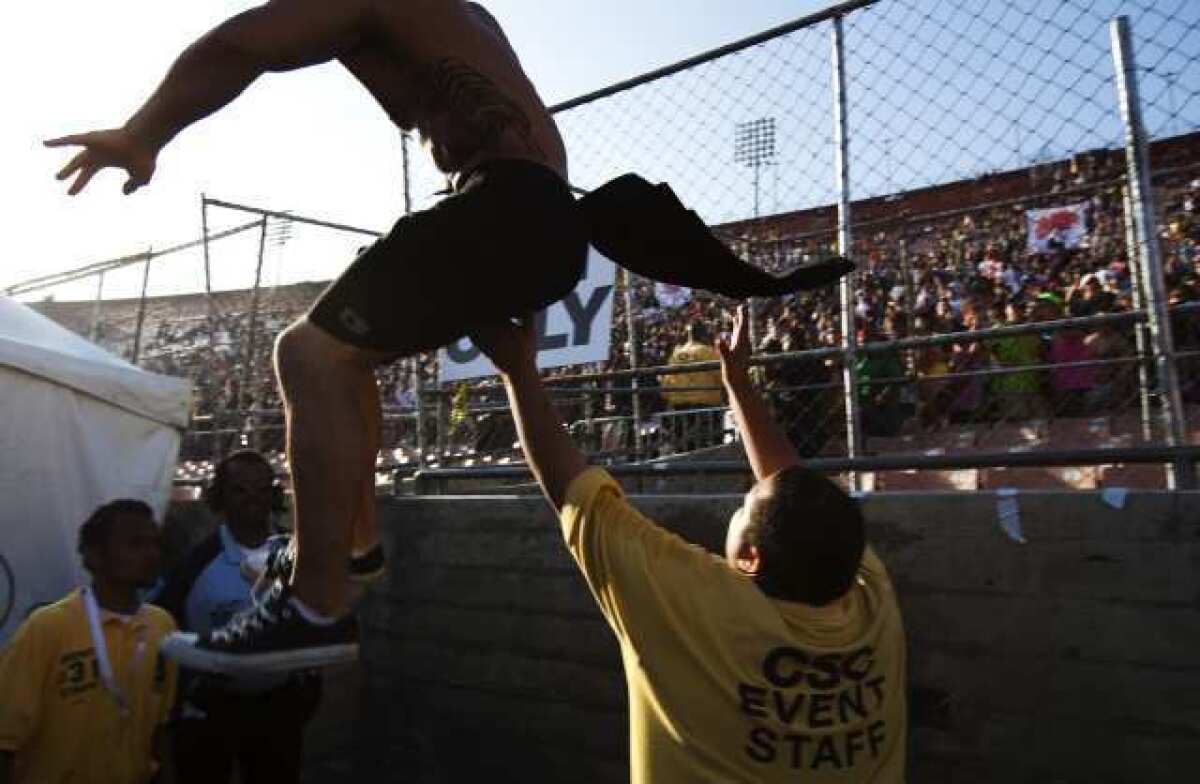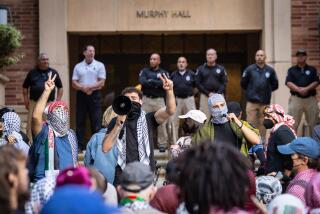USC president urges students not to attend raves

- Share via
The president of USC is warning students not to attend raves, saying use of the illegal drug Ecstasy at the massive dance parties “can create a ripple effect of dangers that lead to catastrophic consequences.”
“I wish to warn you about a specific danger that has become increasingly prevalent in the city of Los Angeles: raves. Occasionally, these are held close to our campuses, often at the Coliseum or the Shrine, and they present serious risks to all who attend,” USC President C.L. Max Nikias wrote in the letter sent by e-mail Wednesday to USC students. The letter was first reported by the Neon Tommy website.
Nikias said Ecstasy is common at raves and can produce paranoia, panic attacks and hallucinations. “Therefore, with the collective support of the university’s senior administration -- and as the father of two USC students -- I strongly discourage your participation at rave events,” he wrote.
Coliseum managers declined to comment on the letter.
The warning came just three weeks after Los Angeles Memorial Coliseum and Sports Arena officials declared the Together as One rave, which attracted 45,000 people on New Year’s Eve, a success. Seventeen patients were transported from the Sports Arena to hospitals, a drop from the previous year, when 34 were transported.
“It was a good event. It went great,” Patrick Lynch, the venues’ general manager, said previously of the New Year’s Eve rave. Lynch said the addition of onsite medical staff helped reduce the number of patients taken to hospitals.
But Los Angeles police and county emergency medical services officials said the number of hospital transports was still significant. The 17 patients taken to nine hospitals between 6 p.m. and 2:30 a.m. “is a lot for the local hospitals to absorb,” said Cathy Chidester, director of the county emergency medical services agency.
Chidester said her agency continues to treat raves as mass-casualty incidents to prevent hospitals nearest the Coliseum from being overwhelmed by severely drug-intoxicated patients, who require extensive resources and staffing.
Patients from the New Year’s Eve rave were transferred to hospitals as far away as Harbor-UCLA Medical Center near Torrance, 13 miles from the Sports Arena.
Raves are big business for the Coliseum and Sports Arena, making up about 28% of their revenue. The publicly owned venues have been struggling financially recently; from July 1 to Nov. 30, their income was $1 million below their target of $2.3 million.
Some commissioners have suggested that raves’ burden on law enforcement and hospitals is similar to that imposed by traditional rock concerts. Police officials disagreed.
“Since I’ve been in South Bureau, I haven’t had to police a traditional type of rock concert in 25 years, probably,” said Los Angeles Police Department Cmdr. Bob Green. Raves are the primary events police must oversee, he said.
There were 12 felony arrests and 22 misdemeanor arrests at the New Year’s Eve rave, mostly related to drugs or false identification. Sixty officers patrolled the inside of the Sports Arena, while 286 officers patrolled the exterior.
Green said crowding was a problem: Some attendees waited as long as 90 minutes to enter, putting pressure on screeners to work faster at the expense of thoroughness.
The letter from USC’s president was released a week before the Coliseum Commission will meet. The commission -- a joint state, county and city panel -- could discuss whether to bring back the Electric Daisy Carnival rave in June. A 15-year-old girl, Sasha Rodriguez, overdosed on Ecstasy at that event last year, fell into a coma and later died.
The letter also came about two months after an 18-year-old USC freshman who had been partying at a rave at the Shrine Auditorium fell six stories from his dorm room. The student, who appeared to have consumed alcohol, marijuana and Ecstasy, suffered multiple broken bones and internal injuries and was hospitalized in critical condition.
Pasquale Rotella, founder of Insomniac Inc., which put on the Electric Daisy Carnival, released a statement in response to Nikias’ letter:
“The president’s advice to the students is surprising.... Insomniac’s events aim to cultivate and enrich the human mind and spirit through the arts.”
The state of California has asked USC if it is interested in buying the land on which the Coliseum and Sports Arena sit, USC officials said in December. The sale would help the state with its budget problems. Negotiations were expected to take several months.
The next meeting of the Coliseum Commission will be Feb. 2 at 2:30 p.m. at the commission meeting room near Gate 33-A on the eastern edge of the Coliseum. An agenda for that meeting has not yet been posted.
More to Read
Sign up for Essential California
The most important California stories and recommendations in your inbox every morning.
You may occasionally receive promotional content from the Los Angeles Times.











